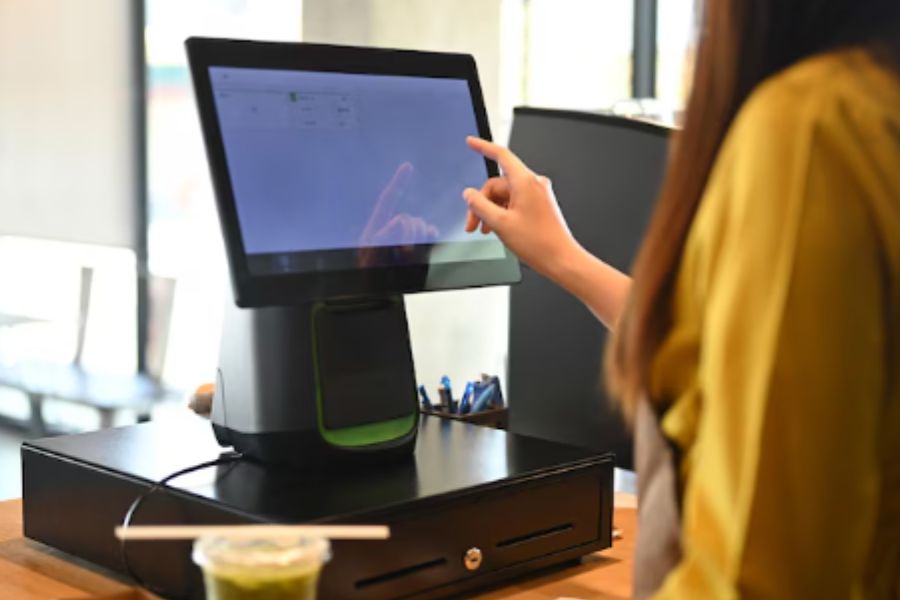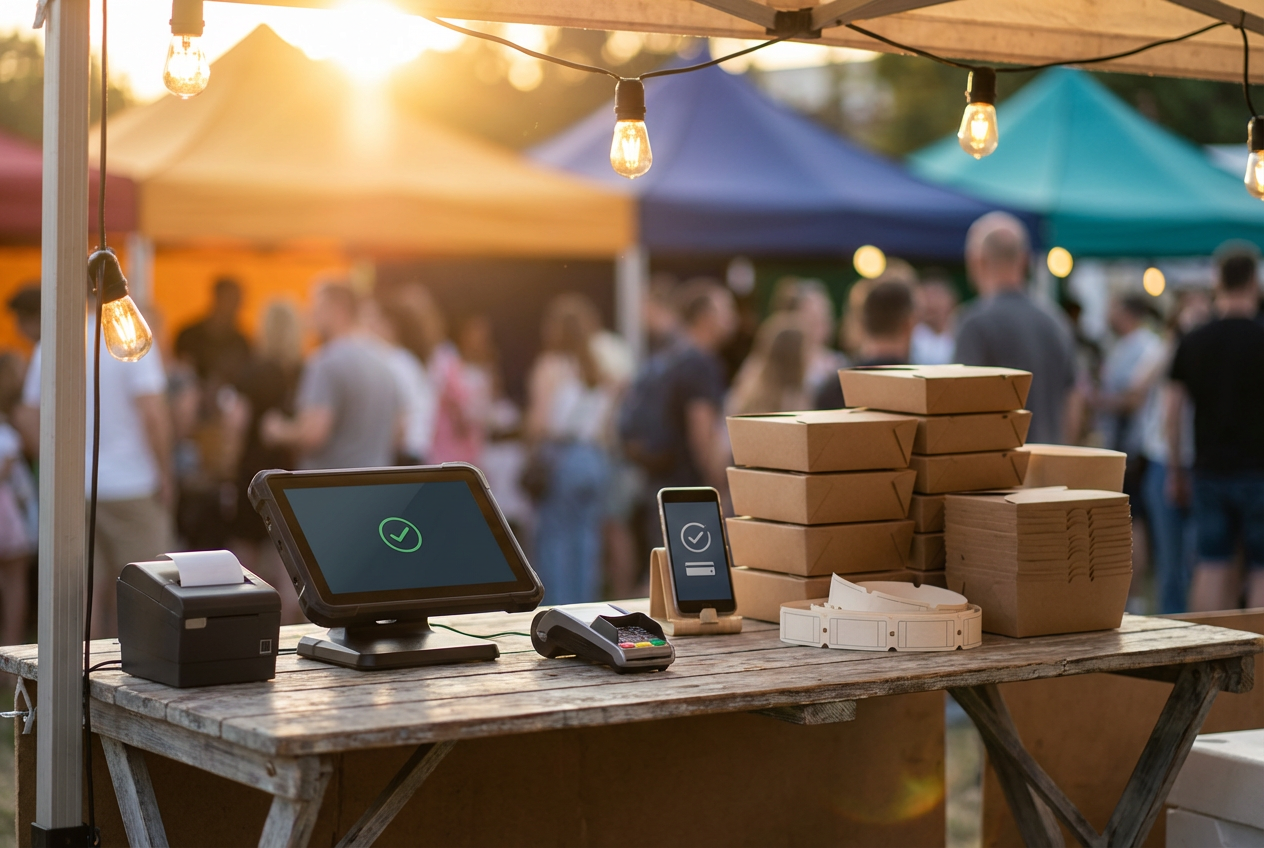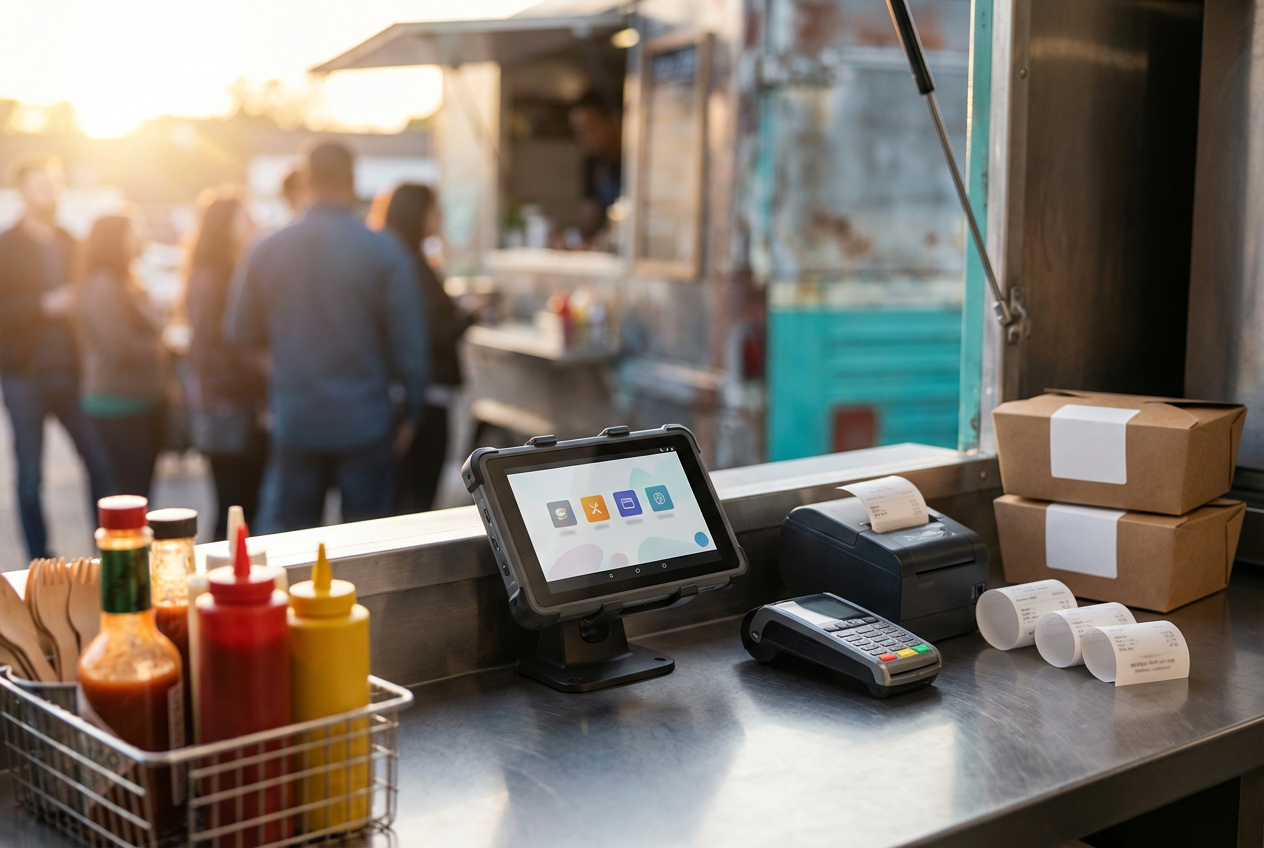Operating several branches in Thailand sounds simple at first, but pricing quickly complicates things. A tourist-heavy shop in Chiang Mai charges more than a local-focused store in Udon Thani. One gets walk-ins with baht. The other gets WeChat Pay. Prices, taxes, and discounts shift by region, not just product. Trying to manage that manually? That’s how ‘one wrong click’ becomes a week of fixing errors. A proper multi store point of sale software prevents that. Not by locking every store into a rigid template, but by letting each store play by its own rules while the whole business stays in sync.
Highlights:
- A strong multi-store POS system should support centralized control, flexible pricing setups, real-time inventory tracking, and seamless coordination across all store locations.
- Multi-store POS software makes localized pricing easier by allowing store-specific rules, linking pricing to local inventory, and adjusting based on real-time performance data.
Local Pricing in Thailand Isn’t One-Size-Fits-All
Prices in Bangkok don’t always make sense in Hat Yai. Prime retail rent in Bangkok averages around 3,717 baht per square meter, while in Hat Yai, it’s closer to 356 baht. That’s a massive gap, and it changes how each store sets prices just to stay afloat. So is foot traffic, Bangkok malls have bounced back to 80% of pre-pandemic levels, but some southern cities are still seeing 30–40% lower retail sales. What sells in one place might sit untouched in another.
Spending power tells the same story. Bangkok’s GDP per capita is about US$18,100, while Songkhla Province, where Hat Yai is located, sits around US$7,985. That’s more than a 2x difference in average income. Naturally, a discount that works in Hat Yai might feel unnecessary in Bangkok and vice versa.
Loyalty programs add another twist. A Chiang Mai branch might offer point-based cashback, while the Phuket store attracts tourists with bundled souvenirs. Without smart pricing tools, it’s a spreadsheet mess.
A good multi store retail POS software gives you the flexibility to handle this chaos. You can fine-tune pricing, tailor promotions, and run loyalty campaigns that match each location’s vibe while still keeping everything synced at HQ.
What to Look For in Multi Store Point of Sale Software?
Centralized Control vs. Local Customization
Too much control slows stores down. Too little, and your brand falls apart. The balance is giving stores freedom where it counts, while keeping shared rules in place.
Look for custom POS software that lets you assign pricing rules by store. One branch may want to discount clearance items on weekends only. Another might need bundle deals for a nearby festival. Headquarters just needs to know what’s running and how it’s performing. No extra approvals. No duplicated work.
That’s exactly what smart multi store point of sale software does behind the scenes. It supports store-level flexibility inside one connected system.
Currency Handling and Tax Compliance in Thailand
Thailand runs on Baht, but the shopper in front of you might not. Especially in tourist zones, stores need to process other currencies without hiccups. Add in PromptPay, QR payments, and e-wallets, and the payment scene gets messy fast.
Tax adds another layer. VAT in Thailand sits at 7%, and receipts must include detailed info in Thai. Some stores are part of government subsidy programs. Others need export receipts for international buyers. The system must understand local rules without needing a finance team at every store.
►►► Optimal solution set for businesses: Multi store POS, Next-gen POS, Inventory Management Software (MSI), Self Service, Automation, Backorders
The right multi store retail POS software handles all of this without slowing down checkout. Staff scan, tap, print, and go. Whether it’s a bulk invoice in Thai or a tourist-friendly digital receipt, it just works.
Real-Time Data Sync to Avoid Pricing Conflicts
Price mismatches kill trust. One customer sees the price listed as 990 baht online, then walks into the shop and is told it costs 1,190 baht. That’s a refund waiting to happen.
Real-time syncing fixes it. One product update, whether from head office or a store manager, should instantly reflect across all channels. If the POS can’t do that, you’re looking at chaos.
That sync matters beyond prices. Inventory counts, customer records, and discount rules all need to match. Without it, staff waste time checking stock, correcting receipts, and apologizing for mix-ups.
The best multi store point of sale software doesn’t ask you to ‘push sync’ or schedule batch updates. It just keeps everything aligned. That’s how you avoid pricing errors and keep shoppers from walking out.
How Multi-Store POS Enables Smart Local Pricing Strategies
Ever tried launching a flash deal in one store while another’s running clearance? That gets tricky fast if your system can’t tell the difference. That’s why Thailand’s retailers are leaning into smarter tools, not just for control, but for pricing that actually makes sense by location.
Assigning Store-Level Pricing Rules with Ease
What sells in Bangkok might sit untouched in Khon Kaen. Instead of forcing a single price across branches, smart POS software lets each store pick its own pricing rules.
Managers can adjust prices based on traffic, season, or even weather. Think raincoat discounts during monsoon season or upselling luggage during peak travel. Stores don’t have to wait for HQ to approve every change. That kind of control, built into the system, keeps things moving.
At the same time, the head office can still see it all from one place. No surprises. Just clear visibility into who’s pricing what, and why.
Running Location-Based Discounts Without Duplication
Promotions are where things fall apart fast. One branch adds 10% off. Another copies it, but forgets the end date. The third runs it twice. Suddenly, margins are off and nobody knows which deal is live.
A good multi store point of sale software keeps this clean. You create a promo, select the stores, set the time frame, and let the system do the rest. No manual edits. No extra data entry. Just clear, trackable promotions tailored to each branch..
Better yet, you can test different offers across regions. Maybe buy-one-get-one works in the North, while loyalty credits hit harder in the South. One dashboard shows what converts best without the need to guess.
Monitoring Local Performance to Adjust Prices Faster
Price isn’t set-it-and-forget-it. What worked last month might fall flat now. A smart system doesn’t just track sales. It shows which prices work where.
Maybe the 599 baht blouse flies off racks in CentralWorld but gets ignored in Chiang Rai. That’s not failure. It’s feedback. POS systems that track real-time sales by SKU and location help stores adjust on the fly. No need to wait for month-end reports.
It also helps plan clearance. See where products are lagging. Drop the price in those locations only. No blanket discounts. Just sharper markdowns where they matter.
That’s how a multi store retail POS software turns pricing into a flexible, fast-moving strategy without drowning in manual changes or conflicting data.
Multi Store Means More Than Just Pricing Control
Getting prices right is just the start. A true multi store point of sale software goes beyond digits on a tag. It connects the dots between staff, stock, and sales, so your business moves as one, not in pieces.
Unified Reports Across All Stores
Ever tried comparing store performance using five different spreadsheets? That’s how blind decisions happen. One branch looks busy, but is it actually turning a profit? Another moves less stock but has better margins.
With the right POS, you see everything on one screen: sales, refunds, inventory turns, promo performance, even staff numbers. Filter by region, time, or SKU. No need to chase reports or guess.
And when store managers see their own numbers clearly, they don’t just sell more. They own it.
Staff Management and Role-Based Access
Too many cooks? More like too many passwords. Cashiers editing prices, part-timers seeing sales data. That’s a problem waiting to happen.
A proper multi store retail POS software sets clear roles. Sales staff can scan and ring up. Managers can adjust stock or pricing. Regional heads get the bird’s-eye view. Everyone logs into the same system but sees only what they need.
Training gets easier, too. A Thai-language interface for new hires, English for HQ. The system adapts to people, not the other way around.
Local Inventory Control Linked to Pricing Tiers
One price doesn’t fit all and neither does one stock plan. The Rayong branch might sell through sandals faster than Bangkok. Without store-level inventory control, you either overstock or run out.
Smart POS tools let each location track its own items. Add pricing tiers linked to what’s available. Offer a bulk deal where stock piles up. Pull back discounts where items sell fast.
This isn’t just about avoiding deadstock. It’s how you keep pricing sharp without burning profits.
Why ConnectPOS is Built for Multi-Store Retailers in Thailand
Running multiple stores without the right tools? It’s chaos. That’s why more retailers across Thailand are switching to ConnectPOS.
ConnectPOS is a cloud-based, multi store point of sale software that helps you manage pricing, inventory, staff, and orders across branches without juggling spreadsheets or duplicating work. It’s exactly how Departure Thailand (Bangkok) scaled from online-only to a full omnichannel brand: syncing product data, inventory, and payments across their webstore and physical boutique, minus the mess.
Here’s what makes ConnectPOS stand out:
- Localized pricing controls: Set different prices, promotions, and product bundles for each store based on location, demand, or customer base.
- Centralized dashboard: Log in once. Track everything like sales, stock, staff, and performance across all stores from a single screen.
- Real-time synchronization: Stock levels, prices, and customer data update instantly across all locations and channels, online and offline.
- Built-in support for Thai retailers: Handle VAT, print Thai-language receipts, accept PromptPay, and process payments in multiple currencies with ease.
- Offline selling, no interruptions: Internet down? No problem. Your stores can keep selling with ConnectPOS’s offline mode, data syncs as soon as you’re back online.
- Multi-language interface: Switch between Thai and English to match your team’s language preference and reduce training time.
- Integrated ecosystem: Sync ConnectPOS with Shopify POS, BigCommerce POS, Magento POS, and leading ERPs, CRMs, and accounting systems, no messy middleware.
- Staff access control: Set permissions by role. Your manager can access sales data. Your cashier can’t touch pricing settings.
- Mobile-friendly and hardware-flexible: Run ConnectPOS on tablets, mobile, or existing hardware, cut down setup costs while giving your team flexibility on the sales floor.
FAQs: Multi Store Point of Sale Software in Thailand
1. How do I manage different prices at each store?
Use a POS system that supports store-level pricing. That means you can set custom prices, promos, and discounts by location, not just by product. It helps tailor pricing to demand, competition, or seasonality without affecting other branches.
2. Is it hard to train staff across multiple locations?
Not if the system actually speaks their language. Choose software that supports both Thai and English, and tailors each dashboard to the user’s role. Cashiers, stock managers, and supervisors only see what’s relevant to them.
3. Can I view all stores’ performance in one place?
Yes. A proper multi-store POS software gives you a single dashboard to track sales, stock, pricing, and staff activity. You don’t need separate reports. Just one login to monitor your entire chain in real time with zero lag.
Final Thoughts
In Thailand’s fast-moving retail scene, pricing can’t stay flat across the board. Each store has its own rhythm, its own crowd, costs, and quirks. That’s why multi store point of sale software isn’t just nice to have. It’s the only way to keep control without clipping local flexibility.
ConnectPOS is built for Thai retailers, it understands what stores need on the ground: PromptPay, Thai-language receipts, VAT compliance, and multi-currency sales. And it connects all the dots, from your Shopify store to your sales floor.
Looking to run smarter, not harder? Explore how ConnectPOS can help you grow without losing control. Reach out to us today!
►►► Optimal solution set for businesses: Shopify POS, Magento POS, BigCommerce POS, WooCommerce POS, NetSuite POS, E-Commerce POS



